#american stonehenge
Text
Pulp Storytime #32: What I did for my summer vacation!
Meet me by the moonlit hedges. Don’t bring any spies.
Today’s session was supposed to be focused on two historical oddities: American fascist summer camps, and “Stonehenge USA”. The players (Simon, Oksana, Javid, and Penny (with a new player) were staff at camp Winnemucca in New Hampshire. They feuded with the counselors of Centro Estivo Cansiglio, and there was a climax at American Stonehenge, with mystical barriers weakened by the Fourth of July fireworks. But the real drama was created by competition day*.
The boys’ camp, CEC, came over. The night before, Oksana had infiltrated the camp and found out it was run by Luigi Cadorna, a former Italian general. Italy wanted to study American mysticism and create fascist sympathy in American youth. And to do that, they wanted the spirit stick, a Penobscot artifact held all year by the winning camp.
Not everybody knew this, so Penny An'Te, Hawaiian gambling queen, decided to bet a week’s salary against her own camp. Devika was the head of a girl’s cabin, so Lord Simon, her number one supporter, felt compelled to cheat on her behalf. He asked Javid to help, who sabotaged one of the kayaks.
The players cheated to influence all three of the competitions. Lord Simon stole the list for the scavenger hunt. Lifeguard Penny rescued the kayak team before they sank, and gave them a boost from underwater. Tactician Javid gave the girls advice to win the tug-of-war.
These (and other lies) came out during the group’s night off. Lord Simon lied to the snitch counselor Darlene that he was happy to take her to dance. When she got the wrong idea, he meant to say “I’m not interested in women” but it came out “I would never be with someone who looks like you.” MORE DRAMA. Worse, she was the party’s ride.
Penny yelled at Simon, Oksana reprimanded Penny, and Javid played innocent.
While the rest of the scenario was filled with incident (including Oksana disrupting a ritual site by throwing beer bottles into a sacred slot), player drama is a thing to cherish.
*You know you had an action-packed adventure when you truncate the opening, which was a nature hike interrupted by a bear attack.

Darlene, the snitch.
#fate core#gaming#table tales#summer#summer camp#That one TAL Episode#New Hampshire#American Stonehenge
0 notes
Text
youtube
#Youtube#inca#history#documentary#bolivia#tiwanaku#american stonehenge#south america#archeology#titicaca#lake titicaca
0 notes
Text
Another recent interview we did was with Dennis Stone. Dennis owns what is called "American Stonehenge" in New Hampshire. This was a pretty fascinating episode!
youtube
#culz paranormal#keegan cool#sam vander meulen#mark cool#culz interviews#dennis stone#american stonehenge#stonehenge#americas stonehenge#georgia guidestones#archeology#ruins#henge#history channel#ancient aliens#Yeti#Sir Edmund Hillary#mount everest#new hampshire#history#museum#america unearthed#summer solstice#winter solstice#william goodwin#salem witch trials#salem#massachusetts#mystery hill#ufo
0 notes
Text
American Stonehenge (The Adventures of Jimmy and Andrew #1) by Mike Goldstein- middle grade sci-fi
Adventurous and suspenseful with many interesting topics, beautiful illustrations, and moral lessons.
#AmericanStonehenge #TheAdventuresofJimmyandAndrew #MikeGoldstein#middlegrade #scifi
American Stonehenge is adventurous, and suspenseful middle grade sci-fi with many interesting topics, beautiful illustrations, and moral lessons.
American Stonehenge (The Adventures of Jimmy and Andrew, #1) by Mike Goldstein
Publication Date : December 11, 2018
Publisher : J & A Ventures, LLC
Read Date : November 28, 2022
Genre : Middle Grade sci-fi / Historical Fiction
Pages…

View On WordPress
#Adventure#American Stonehenge#American Stonehenge (The Adventures of Jimmy and Andrew#Book Blog#book blog feature#Book blogger#Book review#book review blog#book reviewer#eclectic reader#Historical Fiction#Indian Book Blogger#J & A Ventures#Middle Grade#middle grade fantasy#middle grade sci-fi#Mike Goldstein#Reader#reviewer#Supernatural
0 notes
Photo










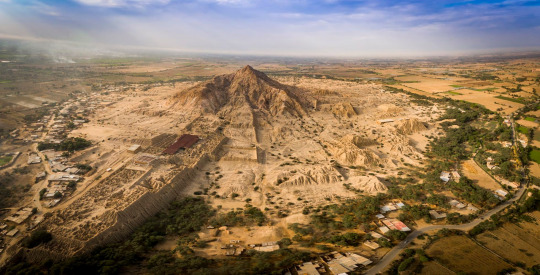



"Mesoamerica, long thought to be the precocious child of the Americas, was still confined to the Mesoamerican village during the time we are talking about, and monumental architecture in Peru was a thousand years old when the Olmecs began their enterprise.
For the sake of world cultural context, this also means that Peruvian monumental architecture was in place by the time the Painted Pottery culture of neolithic northern China emerged, that it existed before England's Stonehenge was created, and that it was already about a thousand years old when Tutankhamen's body was being embalmed in Egypt." - American Holocaust
#mesoamerica#peru#olmecs#stonehenge#painted pottery#Tutankhamun#Tutankhamen#architecture of peru is stunning#and when you think how beautiful it was before robbed of gold silver gems etc...#indigenous#native americans#mesoamericans#indigenous american#this was in my drafts for nearly 3 years#Nazca Lines#pyramid#pyramids#architecture#engineering
10 notes
·
View notes
Text






#Manhattanhenge#Manhattan#New York#sunset#Neil deGrasse Tyson#Hayden Planetarium#American Museum of Natural History#Stonehenge#Gerald Hawkins#setting sun#summer solstice#grid system#Chicagohenge#Baltimorehenge#Torontohenge#phenomenon
4 notes
·
View notes
Text

American Stonehenge
#geoguessr#uzworm#twitch stream#geoguessr stream#things i found on geoguessr#concrete blocks#united states#american#USA#stonehenge#hey it's me#I don't usually post screencaps with me in it but this took up the whole screen#screencap
5 notes
·
View notes
Text




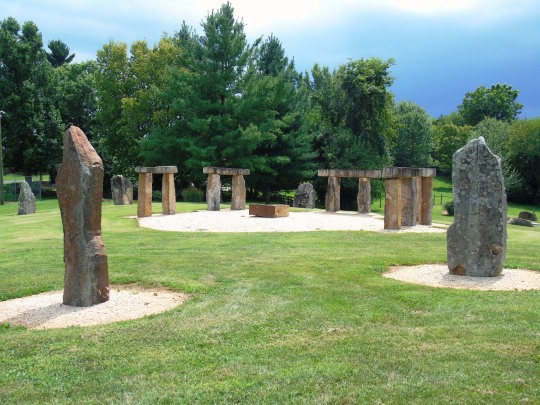




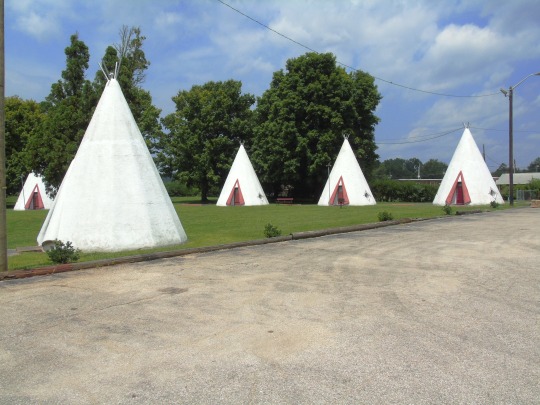




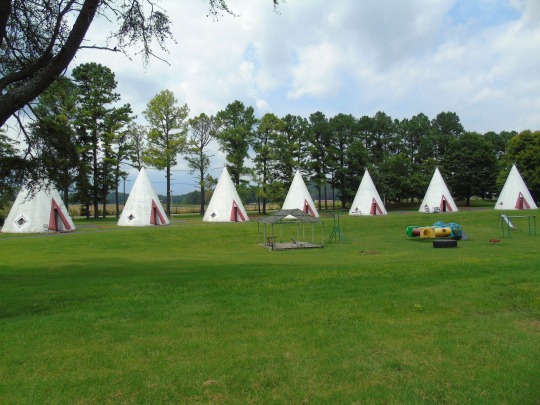



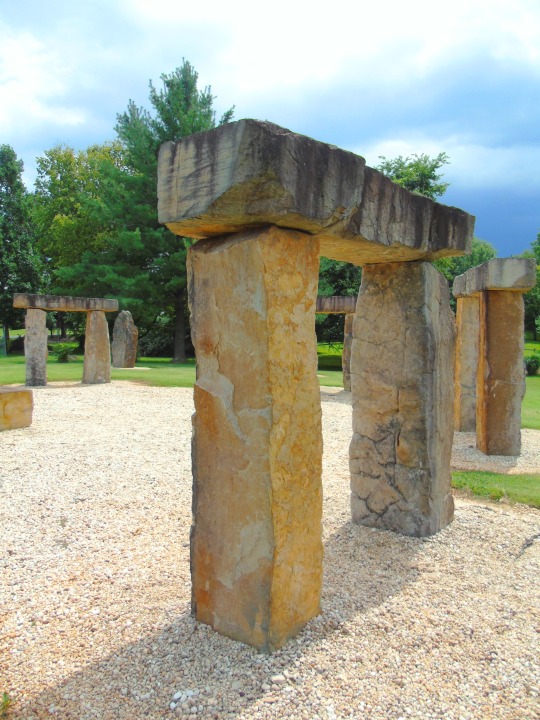




American Civil War: The Confederate States of America accepted a rival state government’s pronouncement that declared Kentucky to be the 13th state of the Confederacy on December 10, 1861.
#American Civil War#US Civil War#Kentucky#10 December 1861#travel#anniversary#US history#summer 2016#Mammoth Cave National Park#flora#woods#landscape#cityscape#original photography#vacation#Cave City#Wigwam Village Inn 2#Kentucky's Stonehenge#Munfordville#Bowling Green#architecture#National Corvette Museum#tourist attraction#landmark#roadside atrraction#USA
2 notes
·
View notes
Text
How Old Are The Egyptian Pyramids? And Why Did The Ancient Egyptians Build Pyramids In The First Place?
— By Owen Jarus | August 30th, 2023

The Pyramids of Giza, seen here with the Milky Way in the background, are not Egypt's oldest Pyramids. Image Credit: Getty Images
Pyramids are iconic symbols of the ancient pharaohs' power and technological prowess that still dominate the Egyptian skyline. But when were pyramids first built? And why were they constructed in the first place?
The first pyramid in Egypt was built by the pharaoh Djoser, who reigned nearly 4,700 years ago. More than a millennium later, ancient Egypt's last pyramid built for a pharaoh was constructed for Ahmose I around 3,500 years ago. After that, Egyptian rulers were buried in underground tombs in the Valley of the Kings.
Put another way, the ancient Egyptian pyramids were built between about roughly 2700 B.C. and 1500 B.C. This makes the earliest pyramids about the same age as Stonehenge, which was initially built between 4,000 to 5,000 years ago. But the pyramids are much older than other ancient structures, including the Parthenon (447 B.C.), the Great Wall of China (220 B.C.) and the Colosseum (A.D. 80). The Neolithic temple Gobekli Tepe in Turkey, however, is older from 11,000 to 12,000 years ago.
Egypt's First Pyramid
Djoser's pyramid is made up of six layers and was originally built as a type of rectangular tomb known today as a mastaba (an Arabic word meaning "bench") before being expanded into a step pyramid.
Ancient inscriptions indicate that a man named Imhotep directed the step pyramid's construction. "Imhotep is usually regarded as the first architect in Egypt to build in stone and is credited with the building of Djoser's step pyramid complex" Marc Van De Mieroop, a professor of history at Columbia University, told Live Science in an email. "There's an inscription with his name combined with that of Djoser in which he is called chief of sculptors. In later ancient Egypt he was considered a sage," Van De Mieroop added.

The Step Pyramid of Djoser is the oldest Pyramid in Egypt. Image Credit: Anton Petrus / Getty Images
Why Did The Egyptians Build Pyramids?
Researchers are still unsure exactly why pharaohs chose to use pyramids for their burials.
One reason may have been to provide added protection against tomb robbers. In earlier times robbers plundered pharaohs' low-rising mastaba tombs by burrowing in from the top, Egyptologist Reg Clark wrote in his book "Securing Eternity: Ancient Egyptian Tomb Protection from Prehistory to the Pyramids" (American University in Cairo Press, 2019). The step pyramid, with its six layers on top of each other, would have offered protection from this method, Clark wrote. "Many Egyptologists have suggested that the step pyramid formed a kind of 'stairway' for the king to ascend to the sky, but I suggest that [it was built] because it is the most efficient and economical way to create a virtual 'hemisphere' of protection over the underlying substructure," Clark told Live Science in an email.
Another important innovation was that stone was used to build the step pyramid, whereas the mastabas used by previous pharaoh were made of mudbrick; this was important as stone is harder to infiltrate, Clark noted.
Religious reasons may also have been an important factor. Miroslav Verner, a professor emeritus of Egyptology at Charles University in the Czech Republic, told Live Science in an email that "probably religious reasons were behind" the idea to build pyramids.
When Djoser came to power, the influence of the sun cult and the sun god Ra (also spelled Re) was increasing, Verner wrote in his book "The Pyramids: The Archaeology and History of Egypt's Iconic Monuments" (American University in Cairo Press, 2021). The sun cult's growing influence may have led to a desire to build structures that reached higher into the sky. Verner noted that a passage from a text dating back around 4,400 years said "may the sky make the sunlight strong for you, may you rise up to the sky as the Eye of Re" (Translation by Raymond Faulkner).
One question is whether a growing interest in the sun cult brought about the construction of the step pyramid, or whether the construction of the step pyramid brought about an increasing interest in the sun cult. "What came first, the egg or the chicken?" Massimiliano Nuzzolo, a researcher at the Institute of Mediterranean and Oriental Cultures of the Polish Academy of Sciences in Warsaw, told Live Science in an email.
Nuzzolo thinks that interest in the solar cult grew after the construction of the step pyramid. "This incredible architectural enterprise may have also affected and somehow even pushed for a change in the religious ideology, eventually reflected on a major emphasis on the solar aspects of the kingship," Nuzzolo said.

The Bent Pyramid, built under ancient Egyptian Pharaoh Sneferu, is named for its unique angles. Image Credit: Getty Images
Built For A Millennium
Whatever the reasons for building pyramids, Egyptian pharaohs constructed them for more than a millennium. The pharaoh Sneferu (reign circa 2575 to 2551 B.C.) built the first true pyramids (pyramids with flat sides) at Dahshur. These consisted of the Bent Pyramid (so named because of its unusual angle) and the Red Pyramid (named after its color). The Great Pyramid at Giza, the only one of the seven ancient wonders of the world that still stands, was built by Khufu (reign circa 2551 to 2528 B.C.) while Khafre (reign circa 2520 to 2494 B.C.) built another large pyramid, along with the Great Sphinx, at Giza.
It's not clear why Egyptian pharaohs stopped building pyramids, but security concerns may have been part of it. Despite likely being harder to loot than mastabas, Egyptian pyramids were plundered in ancient times, and pharaohs may have hoped that building their tombs in the Valley of the Kings would make them harder to ransack. Additionally, the topography of the valley has a peak that today is called el-Qurn (sometimes spelled Gurn), which looks a bit like a natural pyramid.
#The Egyptian 🇪🇬 Pyramids#The Ancient Egyptians#Ancient Pharaohs#Egyptian Skyline#Construction Dates#Pharaoh Djoser#Ahmose I#Burials | The Valley of The Kings#Stonehenge | Salisbury | England 🏴#Parthenon | The Great Wall of China 🇨🇳 | The Colosseum | Italy 🇮🇹 | The Neolithic Temple Gobekli Tepe | Turkey 🇹🇷#Imhotep#Marc Van De Mieroop | Professor | Columbia University#Egyptologist Reg Clark#Miroslav Verner | Professor Emeritus of Egyptology | Charles University | Czech Republic 🇨🇿#American University | Cairo | Egypt 🇪🇬#Raymond Faulkner#Massimiliano Nuzzolo#Institute of Mediterranean| Oriental Cultures | Polish Academy of Sciences | Warsaw | Poland 🇵🇱#Live Science#Bent Pyramid | The Great Pyramid of Giza#The Great Sphinx#El-Qurn
5 notes
·
View notes
Text


8 October: brekkie at Friar Tuck Cafe in Amesbury
we went to see the sunrise at Stonehenge, then ventured into town and got coffee & breakfast-yums before going back once the heritage center opened for the day.
the coffee was perfect, and the hot chocolate as well. I got a chicken + mushroom pastry and oh my god I want to have these every morning. or at least once a week. and the halloween cupcakes were delightful; the icing was not only orange-colored but orange-flavoured as well! 🍊👻
10/10, plus infinite bonus points for the experience of getting engaged at Stonehenge during the sunrise 🥰

#foodie#american in england#cafe aesthetic#stonehenge#cafe latte#croissant#pastry#english breakfast#engaged#amesbury#salisbury#friar tuck
2 notes
·
View notes
Text
Respect Neo-Pagans and Our Gods!
Although they probably will never see it (or care), this post is meant for Hollywood, Netflix, Marvel and all other industries and streaming platforms that are hosting shows based on but twisting pagan or polytheist "mythology" or ancient religions such as Gods of Egypt, Immortals, Clash of the Titans, Thor: Love and Thunder, DT17, Supernatural, Kaos, Twilight of the Gods, Blood of Zeus, Percy Jackson, Xena: Warrior Princess, The Chilling Adventures of Sabrina, Record of Ragnarok, American Gods, The Ritual, The Wicker Man, Lore Olympus, etc.
The trend of creating content that demonizes, humiliates, or insults our Gods is upsetting and unfair. Creative and artistic license is one thing, but it's a double-standard for content about the monotheistic god or religions to be treated with respect even when under academic criticism while are ours are depicted as one-dimensional, villainized and humiliated. We are asking for that same respect.
Yes, content about any kind of "mythology" is fun, but the modern world needs to please remember that these were and still are RELIGIONS to many people around the world, myself included.
People worshipped these Gods, listened to their stories around the fire, married under their vows, raised their children, went to war, and but also built magnificent structures, wrote literature, prayed in their temples, and many more!
In fact, we still have vestiges of their worship! The names of the months and days of the week in the Western world come from Roman or Norse/Germanic Gods, the Olympic Games were originally dedicated to Zeus, the Hippocratic Oath was originally a prayer offered to Apollo, people from all over the ancient world visited the shrine and oracle at Apollo's Delphi, and many more examples.
And while yes, sometimes people were sacrificed to some pagan Gods (not so much the Greeks or Romans), but are we really going to pretend that many more people haven't died in the name of Christianity or Islam??
Lord Zeus wasn't just some womanizer, he was also King of the Gods, Father of Gods and Humans, the God of Hospitality, Oaths, Lightning, Law, Order, Authority, Monarchy, etc.
This was also Lord Zeus of the ancient Greeks:
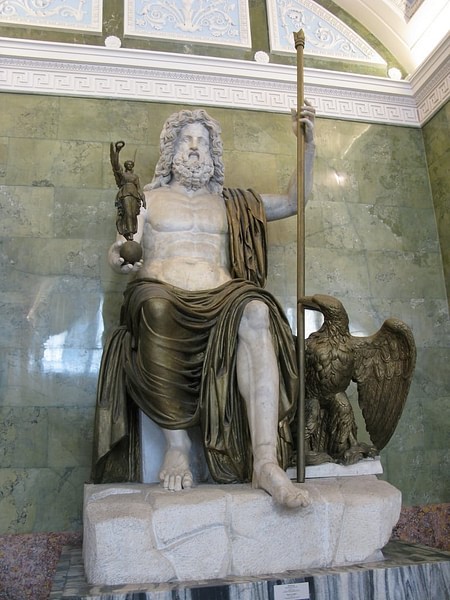
This was also Lord Odin of the ancient Norse:
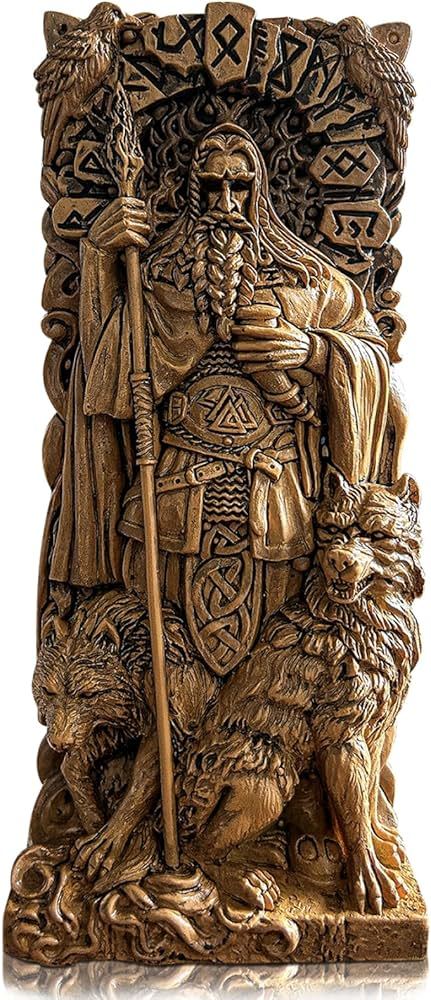
This was also Lady Hera of the ancient Greeks:
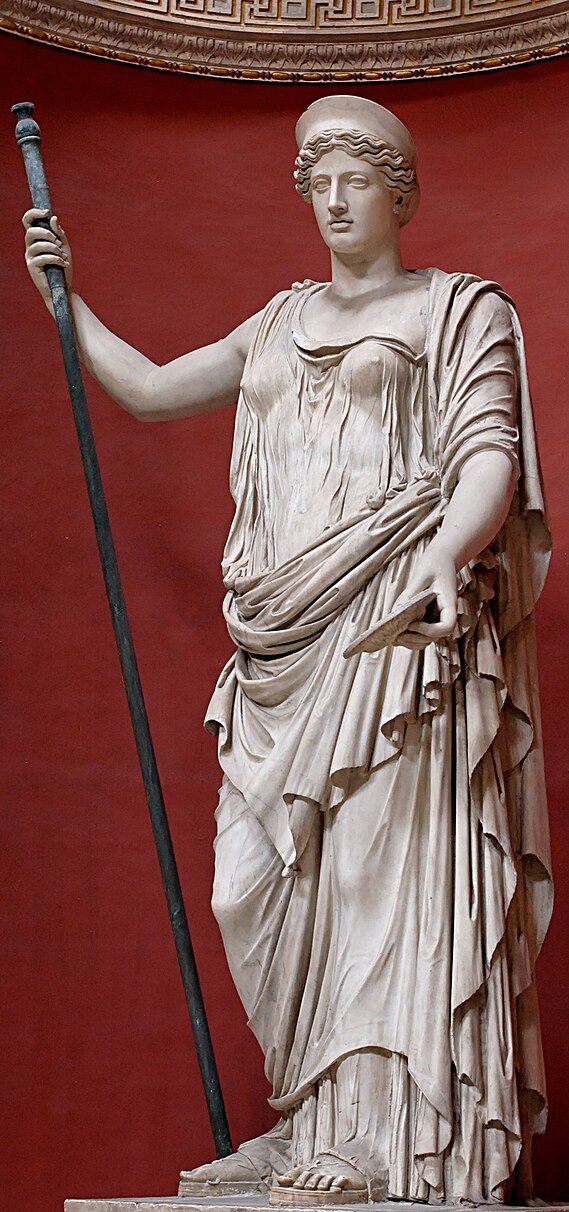
This was also Lord Ra of the ancient Egyptians:

This was also Lord Huracan of the ancient Maya:
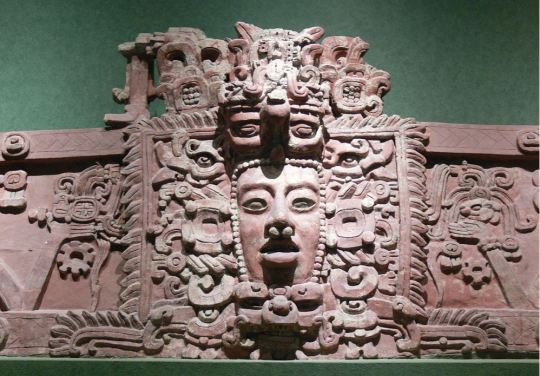
Even if you personally don't worship these Gods, at least respect the fact that your ancestors did. Imagine if 100-200 years from now your descendants start making movies and shows that demonize or humiliate Yahweh, Jesus, Allah and Mohammed, etc.!
In fact, neo-paganism is the fastest growing religion in the United States: https://commonwealthpolicycenter.org/paganism-is-americas-fastest-growing-religion/#:~:text=Paganism%20is%20one%20of%20the,a%20broader%20form%20of%20paganism.
Members of Ásatrù, heathen religion of Iceland, honoring the Norse Gods:

Members of Hellenism, honoring the ancient Greek Gods:
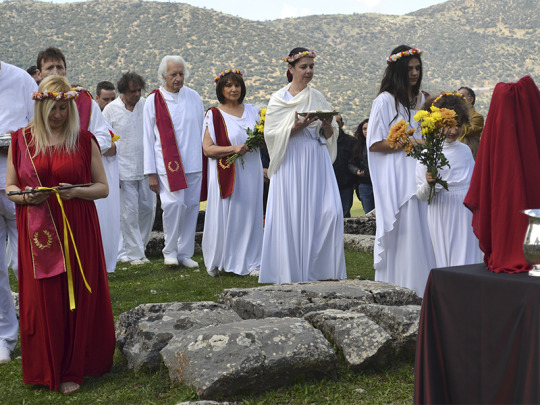
Members of my religion, Nova Roma, honoring the ancient Roman Gods:
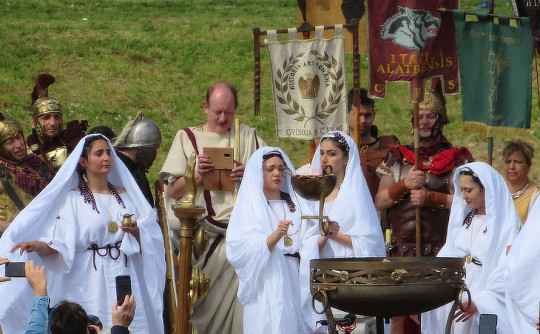
Traditional African religion:

Traditional Maya religion:
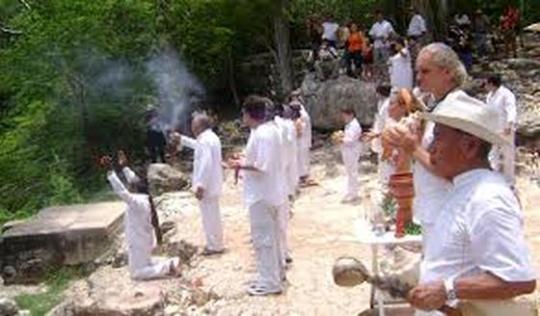
Members of Wicca at Stonehenge, the biggest Neo-Pagan religion in the world with 3-5 million practioners worldwide!

Our Gods are our RELIGION, not just your "mythology!" And both They and we, their followers, deserve the same respect you expect for your religions.
And they at least would never condemn you to an eternal fiery pit simply for not believing in them, unlike some other god I could mention.
They are here. We are here. They exist. We exist. And we are not going anywhere.
#pagan#paganism#mythology and folklore#roman polytheism#hellenic pagan#roman paganism#norse paganism#greek gods#roman gods#wicca#respect all faiths#coexistence#religion#religous themes
61 notes
·
View notes
Text
Sept. 19, 2023
A network of Native American ceremonial and burial mounds in southern Ohio have been added to the list of world heritage sites of the United Nations Educational, Scientific and Cultural Organization (Unesco). The move places what the organization describes as “part cathedral, part cemetery and part astronomical observatory” on the same cultural plane as the Acropolis, Machu Picchu, the Taj Mahal, Stonehenge and the Great Wall of China.
Read more.
210 notes
·
View notes
Text
Conceptualising 10,000 Years
Yes, this is another post about how the ten-thousand-year-old primordial saints of the Resurrection are, indeed, very old. But the tricky thing about human minds is that they're really bad at comprehending massive numbers. So, in this post, I hope to give you, my dear reader, an understanding of what it means to be ten thousand years old.
Let us imagine, just for a moment, that today (28 August, 2024) marks the close of the myriadic year of our Lord–that far-off King of Necromancers, that blessed Resurrector of Saints!–and the Lyctors reach ten thousand years old today. From this premise, I believe we can better grasp just how old these people are, since we can timeline their lives based on real-world events. So, without further ado...
8000 BCE - The Great Resurrection.
Earth is still experiencing the last great Ice Age. Woolly mammoths are still thriving, and, according to some estimates, the last of the smilodon and American lion species still lives. HS Sapiens are still in the Stone Age. Earliest records of ovens used for pottery.
7700 BCE - Lyctors reach 300 years old.
Farmers first domesticate wheat in the area now known as Mesopotamia. Humans have yet to develop advanced agricultural technology, instead relying on very primitive methods.
7000 BCE - Lyctors are now 1000 years old.
Domestication of goats in Mesopotamia.
6700 BCE- Lyctors are 1300 years old.
Domestication of pigs in Mesopotamia.
6200 BCE - Lyctors are 1800 years old.
The Bronze Age begins! Earliest evidence of the smelting of bronze dates back to roughly 6200 BCE in Asia Minor. With the advent of bronze, humans are able to make more effective and more durable tools.
6000 BCE - Lyctors are 2000 years old.
First settlements along the Nile River
5500 BCE - Lyctors are 2500 years old.
Earliest evidence of Ancient Sumer.
5000 BCE - Lyctors are 3000 years old.
Major agricultural developments occurred around this time, including the first evidence for the usage of irrigation.
4000 BCE -Lyctors are 4000 years old.
Extinction of the Woolly Mammoth. Humans develop the first cities around this time, and wool is first used as in textiles.
3100 BCE - Lyctors are 4900 years old.
Construction on Stonehenge begins. Recorded history emerges around this time. The rise of Ancient Egypt begins. Earliest cuneiform texts date back to this time.
2334 BCE - Lyctors are 5666 years old.
Sargon of Akkad is King of the Akkadian Empire.
2154 BCE - Lyctors are 5846 years old.
Akkadian empire dissolves after less than 200 years wow!
2000 BCE - Lyctors are 6000 years old.
Ancient Minoan civilization begins.
1341 BCE - Lyctors are 6659 years old.
Birth of King Tut.
1250 BCE - Lycors are 6750 years old.
Ancient Chinese and Ancient Olmec civilization begins.
800 BCE - Lyctors are 7200 years old.
Start of the Classical Period.
500 CE - Lyctors are 8500 years old.
End of the Classical Period. Sorry, too lazy to write all of it out. Plus, there's a billion resources on it.
900 CE - Lyctors are 8900 years old.
Start of the Dark Ages.
1492 CE - Lyctors are 9492 years old. Planning of Dios Apate Major begins around here in the Locked Tomb timeline.
Columbus "discovers" the Americas (and proceeds to slaughter indigenous peoples)
2000 - The myriadic year of our lord.
I hope you understand how old these people are.
DISCLAIMER: Not a historian. Do not claim to be. These dates are from cursory research and could be inaccurate. Furthermore, this is nowhere near a complete account of human history, especially towards the end, when I got really bored.
Ty <3
22 notes
·
View notes
Text
Ok, idea that I'm really excited about
Everyone is always talking abt an in-person temple for pagans but what if instead of a temple-temple, there was a museum-temple?
Hear me out bc I think this would be really cool.
Things the temple-museum would have:
Permanent exhibits including:
Outside land art similar to Sun Tunnels by Nancy Holt that line up with the solstices/constellations
Inside sky art for meditating similar to Skyspace by James Turrell (PLS look this one up, it's so pretty. The picture in the article doesn't do it justice)
A wall of prayers/manifestations/affirmations. Visitors write them on a post it or note card and pin it to the wall to make a collaborative exhibition like Post Secret at the Museum of Us
A small gallery with general overviews of popular pagan pantheons: Hellenic, Celtic, etc. This will include artifacts from those time periods either depicting the deities or how people worshiped them
A small gallery with historical witchcraft artifacts. This will include medieval European poppets, Copic love spell manuscripts, Chinese oracle bones, etc.
Rotating temporary exhibits including:
Witch trials from around the world (1400-present, bc they do still happen)
Paleolithic cultures: Venus of Wellendorf, Stonehenge, Cave paintings/music, the Lion-man ivory, etc
Did Christianity Steal From Paganism: yes… no… it’s complicated (basically the overlap between early Christianity and Roman paganism) This will include villa mosaics, sarcophaguses, layouts of early churches, etc
The Rise of Modern Occultism: Hilma af Klint, Carl Jung, surrealism, spiritualism, Wicca, etc
A series of exhibits celebrating closed practices: different indigenous religions, Voodoo, Hoodoo, etc (Very important: these will not be teaching those crafts, just giving them the same public platform/attention as open practices. Key word here is "celebrating." People who practice in those closed communities will be consulted)
How paganism is incorporated into Abrahamic religions: Judaism and paganism, Catholicism and paganism, etc (People who practice in those communities will be consulted)
Modern witchcraft, good or bad? So that would be New Age, the rise of consumerism, witchtok, etc
More in-depth focuses on different pantheons: Celtic, Slavic, Mesopotamian, Hellenic, etc
Historical witchcraft accusations and race: Mary Lewis, the New York City Panic of 1741, Ann Glover, etc
Regular people's (like you!) devotional art. The public will be encouraged to donate/create devotional art pieces. Be that visual media, performance art, video art, music, sculpture, photography, writing, etc. It'll really highlight all the different ways people are worshiping, the diversity in deities being worshiped, and how big our community is
An auditorium. This would be for concerts, festivals/ceremonies that are done inside, and guest speakers. Guest speakers would include academics like Malcolm Gaskill (English historian and author), Katherine Howe (American author), etc. as well as big name practicing witches/pagans.
A garden. I haven’t decided yet what kind but I’m debating between a rooftop garden like the MET, one behind the building but open to visitors, or an atrium like medieval European cloisters/monasteries (bc I love those). The garden would be for meditating, connecting to nature/the gods, feeding pollinators, protecting "creepy" insects like spiders or burrowing bugs (bug hotel?), and potentially -depending on what type of garden it is- housing wild birds in bird houses or bats in bat boxes. Also, it could be a good place for festivals/ceremonies that are done outside, concerts, or general get-togethers like altar piece swaps!
And an altar/worship space. Obviously. It wouldn't be a temple without it. I'm thinking it would be mostly a big empty room with chairs and rugs scattered about and an alcove in one wall for the altar. Inside the alcove will mostly be nonspecific religious objects like candles, nice fabrics, flowers, incense, etc . Visitors will be encouraged to bring their own small personal devotional tools (except candles/incense for fire safety reasons). That way they can pray to, appreciate, and connect to their own gods and the main altar doesn't leave anybody out; the main altar is more for ambience than specific worship.
Giftshop? I'm not sure about this one yet bc it feels wrong to have a gift shop in a temple, but most museums, even small ones, have gift shops. It could have fresh herbs from the garden, candles, and local artists' art like prints, stickers, jewelry, etc. All at a reasonable price ofc (I hate overpriced museum giftshops more than anything else in the world... except overpriced museum tickets)
In terms of funding, museums get more government funding than churches, but they do have to pay taxes churches don't. I was thinking of generally modeling it after the Museum of Us in San Deigo; they let their employees pick the holidays they take off so they can each adhere to their personal religious practice, start paying them at $22 an hour with built in raises each year, and good insurance. They have done an amazing job, way better than any big museum, at collaborating with communities from all over the world to either give back artifacts in their collections or closely work with them to reframe how the artifact is presented/stored. They also don't charge for tickets, memberships, school trips, or basically anything except the giftshop. But that means they rely heavily on donations which may not work as well for a museum that's just starting out. Idk, this is all hypothetical rn.
The pillars the museum-temple would stand on are worship, education, and community.
I feel like teaching people about the history of these practices is super important and isn't smth that everybody bothers to learn or has correct information about. (And I'm a huge history/museum nerd if you can't tell lol)
I'm actually really excited about this lol
#i'm getting my degree in art history and museum studies if u can't tell lol#i've done two internships at the American Musuem of Natural History in NYC and i'm set up to do a third next summer#and i'm close w the Director of the Museum of Us and have been invited to work with them in the future (i admire them so much)#so the idea of running a museum that's also a place where ppl can worship and build community is INCREDIBLE to me#but it would take a lot of money. funding is what i'm most concerned about rn#most museums have a bord of directors where they get abt 60% of their funding from but idk who would want to sponsor smth like this#hellenic polytheism#witchcraft#paganism#paganblr#pagan community#polytheism#pagan temple#witchblr#witch community
20 notes
·
View notes
Photo

Jessica Fridrich (Czech-American, b. 1964)
Stonehenge, 2020
192 notes
·
View notes
Note
i know you have Thoughts on welsh being the mysterious elfin language in fantasy media but do you have any different thoughts on using it in arthurian stuff ? lots of people use it as the "magic language" when merlin and other wizards do magic. also do you have any idea why people decided stonehenge is part of the legend ? i can't tell if thats an english or american thing
Wellllll, I've mentioned this before so apologies for the 'broken record' nature of this response to long time followers, but my bigger issue by far with Arthuriana is that it's Ye Olde Culturale Appropriatione and I've yet to find the adaptation that doesn't make it English. Which is. The one thing it should never, ever be.
So using Welsh for magic language is odd, because on the one hand it's acknowledging the actual origins of the whole thing before Geoffrey of Monmouth went "HEY ACTUALLY I KNOW THE REAL VERSION, I GOT IT OUT OF A BOOK OWNED BY MY FRIEND WALTER, YOU KNOW, WALTER OF... OXFORD, THAT'LL DO, HE TOTALLY EXISTS AND HIS BOOK IS SUPER OLD SO THIS IS THE REAL VERSION" and then made a suuuuuuper boring continental-style romance about a cheap affair and some milquetoast knights.
But, on the other, it almost makes it... worse? That you're acknowledging that this was an anti-Saxon hero who represents some of the last vestiges of pre-conquered belief, and then making him English and about England anyway. Kind of like when you read a fantasy book and a character calls out another for not including women/POC/insert underrepresented demographic here, and you're like... so if you, the author, recognised that you were writing nothing but white boys, why did you not add someone else in. If you recognised it but didn't rectify it, that's worse (looking at you, Patrick Rothfuss).
But as ever... is bad rep better than no rep? The old debate. Mileage varies. For the most part, though, I avoid Arthuriana. I think the only one I've been tempted by in recent years is Dev Patel's the Green Knight, because I love Dev Patel, but he still plays it English and he's still called Gawain, so...
116 notes
·
View notes